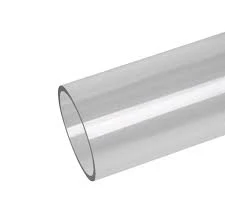Aza . 28, 2024 07:11 Back to list
Understanding HDPE Pipe Fittings for Efficient Plumbing and Structural Applications
Understanding HDPE Pipe Fittings A Comprehensive Overview
High-Density Polyethylene (HDPE) pipe fittings have revolutionized the plumbing and construction industries due to their excellent durability, flexibility, and resistance to a variety of environmental factors. This article delves into the various dimensions of HDPE pipe fittings, their applications, benefits, and installation considerations.
What is HDPE?
HDPE stands for High-Density Polyethylene, a thermoplastic made from petroleum. Characterized by its high strength-to-density ratio, HDPE is recognized for its resilience against impact and various chemicals. These properties make it an ideal choice for pipes and fittings that require durability and long-lasting performance.
Types of HDPE Pipe Fittings
HDPE pipe fittings come in various types that cater to different needs and applications. Common fittings include
1. Elbows Used to change the direction of the pipeline, typically available in angles of 45 or 90 degrees. 2. Tees Designed to connect three sections of pipe, allowing for branching in the system. 3. Reducers Applied to connect pipes of different diameters, transitioning from a larger to a smaller pipe. 4. End Caps Used to seal the end of pipes, preventing any flow of liquids or gases. 5. Flanges Allow for easy connection and disconnection of pipe systems and can withstand high pressure.
Each fitting serves a unique function that supports the overall efficiency of a piping system.
Applications of HDPE Pipe Fittings
HDPE pipe fittings are widely used in various sectors, such as
hdpe pipe fittings

- Water Supply and Distribution Ideal for municipal water systems due to their leak-free joints and resistance to corrosion. - Irrigation Systems Utilized widely in agricultural settings where flexibility and resistance to environmental factors are essential. - Gas Distribution Safe for transporting natural gas and other gaseous fuels, thanks to their low permeability and resistance to chemicals. - Industrial Applications Suitable for conveying materials in chemical plants and other industrial settings, due to their robustness against harsh conditions.
Benefits of HDPE Pipe Fittings
The advantages of using HDPE pipe fittings are considerable
1. Corrosion Resistance Unlike metal fittings, HDPE does not corrode, ensuring a longer life and lower maintenance costs. 2. Flexibility HDPE fittings can bend and flex without breaking, making them ideal for various terrains and installation scenarios. 3. Lightweight They are significantly lighter than traditional materials, facilitating easier handling and installation. 4. Cost-Effectiveness The durability and longevity of HDPE fittings often lead to lower total costs over time, despite a potentially higher initial investment. 5. Environmental Impact HDPE is recyclable, contributing to more sustainable practices within the plumbing and construction industries.
Installation Considerations
When installing HDPE pipe fittings, several key points should be taken into account
- Joining Methods HDPE can be joined through various techniques such as butt welding, electro-fusion, and socket fusion. The choice of method should be guided by application requirements and site conditions. - Trenching and Backfilling Proper trenching and backfilling techniques are necessary to protect the integrity of the pipes and fittings. - Temperature Considerations HDPE materials can expand and contract based on temperature changes, which must be factored into layout and installation practices to prevent stress on the joints.
Conclusion
HDPE pipe fittings are pivotal in modern plumbing and construction practices. Their array of benefits, including durability, lightweight nature, and resistance to environmental stressors, makes them a preferred choice for various applications. As industries continue to seek materials that offer both performance and sustainability, HDPE fittings stand out as a noteworthy solution. Understanding their characteristics, types, applications, and installation requirements can lead to more effective and long-lasting piping systems that meet the demands of today's infrastructure needs.
-
PVC Transparent Sheet Roll - Durable & Flexible PVC Plastic Sheet Roll for Industrial & Home Use
NewsJun.24,2025
-
High-Quality PVC PPR Pipes and Fittings Durable ERA PPR Solutions
NewsJun.10,2025
-
High-Quality Large HDPE Sheets & Large Diameter PVC Pipe Durable Large PVC Pipe Supplier
NewsJun.10,2025
-
High Density Polyethylene Cutting Board - Durable & Food Safe
NewsJun.09,2025
-
3 Inch PVC Pipe for Durable Irrigation Affordable & Reliable
NewsJun.09,2025
-
Premium PPR Plastic Water Pipe Fittings - Durable & Leak-Free
NewsJun.09,2025

